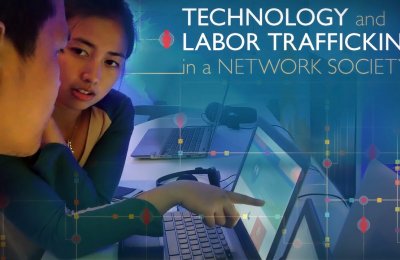USC Annenberg introduced a new cutting-edge and idea-generation space for the Annenberg Innovation Lab on Tuesday at an open house event packed with students, faculty and corporate partners.
On display were a dozen projects already generated by the lab, which launched in November as an incubator for multiple disciplines to develop ideas and tools aiming for both a real-world application and a societal impact.
USC Provost Elizabeth Garrett, an early supporter of the lab, congratulated its leaders on a new space that will “make possible tomorrow what we don’t even think about today.”
“This space to me is the embodiment of a big idea,” Garrett said as she addressed the crowd of attendees gathered at the entrance of the lab, located in USC Annenberg’s West Lobby. “That great universities have to embark on great challenges of the day with cutting-edge methodologies and spaces that don’t just permit collaboration – they require collaboration.
“Because that’s how we’re going to solve the pressing needs of society – whether it’s healthcare, tax policy, government design, the environment, technology – this is a place that your imagination and your hard work and your intelligence will combine with those of your colleagues and your faculty to imagine your future.”

“Innovation is not just about bits and bytes. It’s also about physical spaces like this one where highly creative people can come together and try out really cool ideas. Where they can fail, succeed and experiment,” he said.
A key feature of lab is a Cisco HD TelePresence suite, a 3-D conferencing system room that supports lifelike collaborations among university and corporate leaders. Corporate partners of the lab also include IBM, Verizon, Mattel, Levi Strauss, Intel and Microsoft.
Annenberg Innovation Lab director and communication professor Jonathan Taplin explained the impetus of the lab, which has drawn together students from Marshall School of Business, Rossier School of Education, School of Cinematic Arts, Viterbi School of Engineering and other USC schools.
“We have some great aspirations for this lab,” Taplin said. “We think that the borders of art, science, design and engineering need to be torn down, and we’ve been lucky enough in our first year to find a lot of artists and engineers who agree and want to work together.”
Among the projects demonstrated at Tuesday’s open house:
- A mobile news app developed as an experiment for the Associated Press
- Interactive GeoSurface Map, a land-use storytelling tool that uses geographic data
- R-Shief, a project that aggregates and analyzes real-time data from social media feeds and maps sentiment surrounding the 2011 Pan-Arab revolutions – including recent activity in Libya
- CrisisConnection, a tool that links the Web, handheld devices and geo-location to transmit information about damage, danger and those who need help
- PLAYground, a cloud-based, interactive educational platform being used at the new RFK Community Schools in Los Angeles









